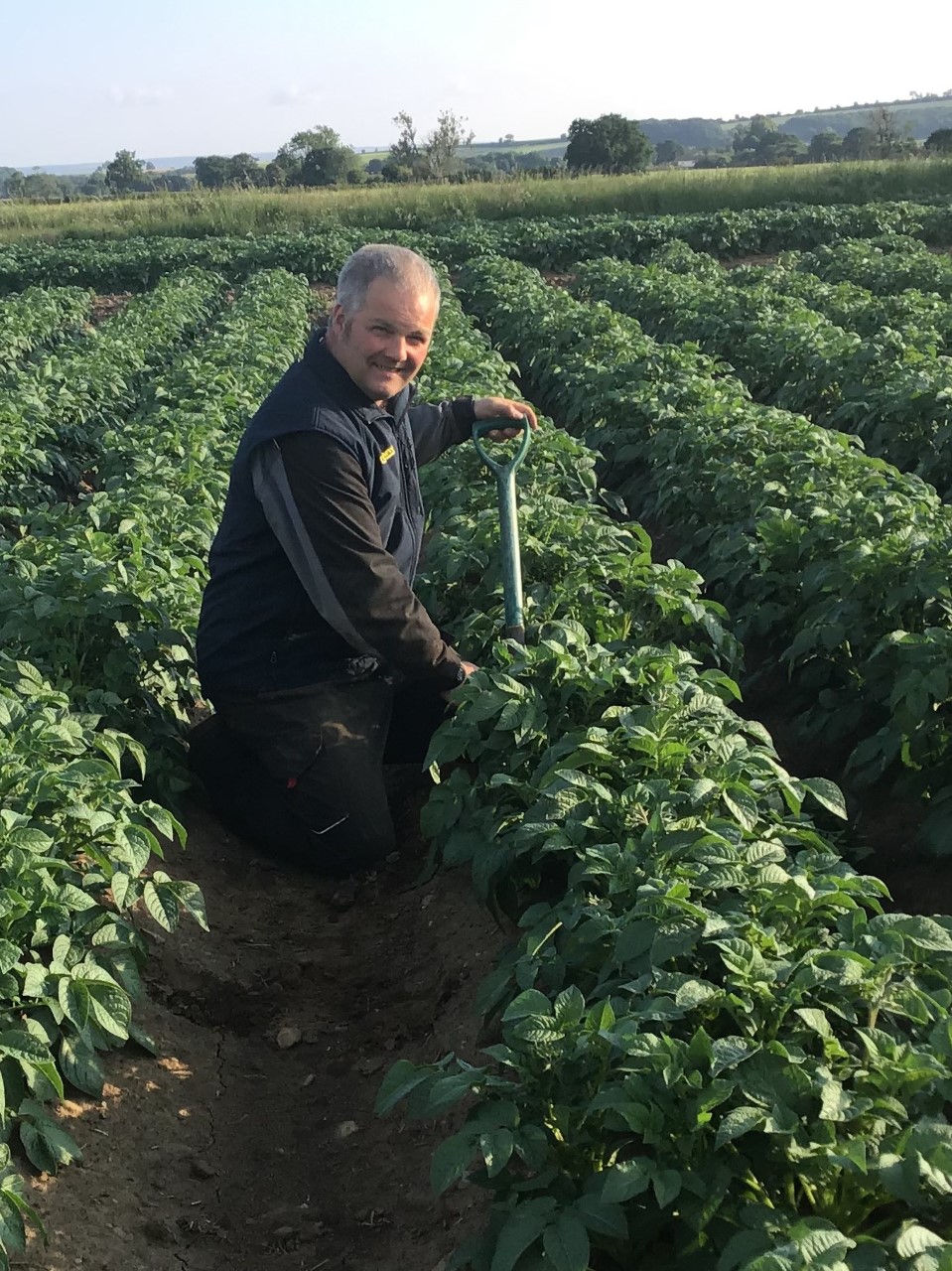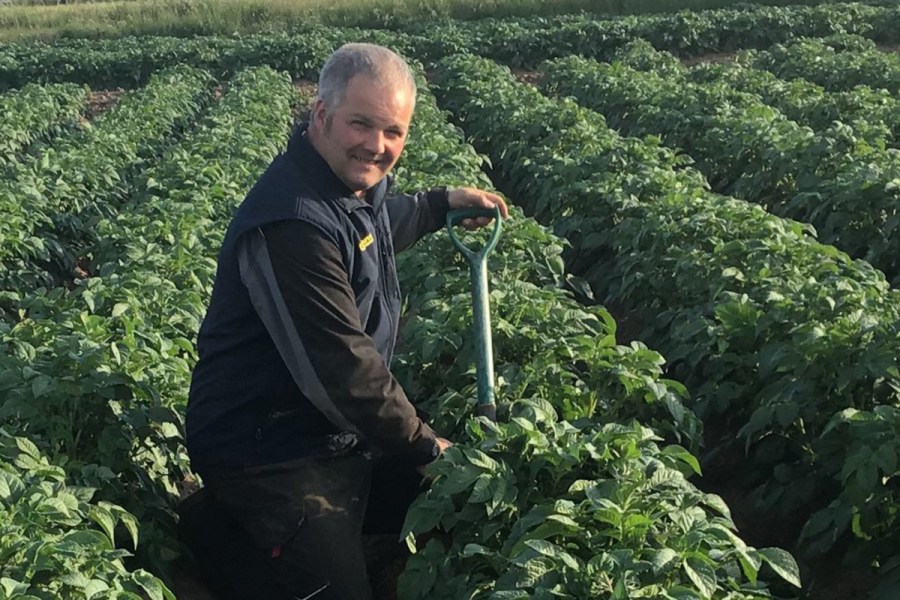 The world is a crazy place at the moment, with volatility not seen before in my working life (I’m a mere pup of 45) that is largely beyond our control.
The world is a crazy place at the moment, with volatility not seen before in my working life (I’m a mere pup of 45) that is largely beyond our control.
So how do we handle this? It’s hard investing when cashflow is terrible and profitability has been meagre (why did I sell 30% of my wheat in December 2020?). But standing still is going backwards, and that isn’t an attractive proposition.
A wise man said to me many years ago “do what you do best and do it better”. Wise words but what do we do best? Adapt, that’s what.
We’re only a small operation, but that can be a strength. We grow feed wheat and barley, malting barley, milling and seed oats, human consumption beans, sugar beet, processing potatoes, and grass for hay. We’ve finished pigs on straw on contract for 30yrs, generate electric from solar on a shed roof, and do some contract work for others in various forms. Until 2019, we ran a haulage business too but, after my father passed away in 2018, we wound it up (a good move as things stand today). After a lot of spreadsheets and soul searching, it didn’t stack up at the scale we were at. Diversification needs to be both profitable and compliment the core business, not hamper it.
So is regenerative agriculture a cool new buzz word or the way forward? I think it’s different for everyone. Our business has been largely built on root crops, and that is where my passion mostly lies, so simply dropping them and buying a direct drill isn’t the answer for us, but that said, there is always a better way to do everything. A direct drill for me is as much a strategic tool as a plough, and at certain junctures in the rotation, it’s very much a tool of choice.
Our heavy land rotation is two wheats punctuated by cover crops and spring break crops, which has been much more successful than our previous wheat-barley-oilseed rape rotation, and before that continuous wheat with bits of setaside. The covers have worked very well, provided we don’t sow them too thick, and the less we work this land the better it gets, but occasional strategic ploughing does help keep grassweeds in check. Our straw is all baled and returned as muck in rotation, which dictates traffic is inevitable.
After many years of min-till, we had some demonstrations of strip-till drills last autumn and have ordered one for 2022, with help from a Defra FETF grant. We intend to fit some pipes to apply some Consortium and Bugboost down the legs after encouraging experiments in beet and potatoes.
My current dilemma is the oat price is stubbornly poor, versus OSR at a record high. Oats provide straw, use very little inputs, are low risk and spring sown. Potatoes command the largest share of attention, so chasing slugs and pigeons all winter doesn’t appeal. Two-row barley on claggy land here has never been good, so it would necessitate a move to hybrid 6-row varieties. The jury is out for now.
Beet has finally seen a lift in price but being this far north it’ll be swallowed in part by transport. It’s been a good performer, uses low amounts of expensive fertilizer and spreads work. Does it make money? Some years definitely. We’re cutting cost out via strategic changes in cultivation and we’re experimenting with applied biology and strip-till establishment. The potential is encouraging at least!
The pigs, solar and contracting help reduce our volatility and exposure, but the potatoes increase it, particularly from a cashflow point of view – never more so than now – and the future looks far from rosy. Risk and reward have been out of kilter for too long, and growers lack fat on their backs to ride these storms. So in a time when we must cut every cost we can, Red Tractors insistence that we spend £179 on a pesticide residue test that is of no value to anyone sticks in the craw a bit.
Scale is an interesting part of my head scratching. Two years ago we cut our spuds back 30% and we’re better off for it. Arguably the most profitable spuds we grow are at home, and if things refuse to improve, that’s where we will go back to. Processors know that they need to step up, but we’re at a point where it has to be more than the ‘just enough to keep going’ that often happens, due to the ever-increasing risks and work involved in growing the things nowadays.
I’m one to find solutions for problems, and we’re tweaking where we can. We have changed a huge amount in the last 15yrs or so to reduce fuel use, improve soil, maintain quality, and improve returns, but all too often it feels like the faster I run the faster the treadmill turns!
Volatility isn’t going away, and there will undoubtedly be changes that need to happen that we haven’t thought of yet, but I’m cautiously optimistic for the future of British agriculture. Where there’s threat, there’s opportunity. Where there’s opportunity there’s challenge, which brings satisfaction, and a few quid if we’re lucky. All work and no brass makes Andrew a dull boy!
Andrew Wilson is a fourth-generation tenant of the Castle Howard Estate in North Yorkshire.
He has a strategic approach to direct drilling on his varied soil types and grows a wide variety of crops. He’s passionate about the potato industry and having been utilising cover crops to reduce cultivation and chemical use since 2011, dipped his toe in the water of regenerative potatoes in 2021.




